
Rabbit Anti-CPT2 antibody
CPT2/CPT1; Carnitine O palmitoyltransferase 2; Carnitine O palmitoyltransferase 2 mitochondrial; Carnitine O-palmitoyltransferase 2; Carnitine palmitoyltransferase II; CPT 1; CPT 2; CPT II; CPT1; CPT2_HUMAN; CPTASE; CPTII; mitochondrial.
View History [Clear]
Details
Product Name CPT2 Chinese Name 肉毒碱棕榈酰基转移酶2Recombinant rabbit monoclonal anti Alias CPT2/CPT1; Carnitine O palmitoyltransferase 2; Carnitine O palmitoyltransferase 2 mitochondrial; Carnitine O-palmitoyltransferase 2; Carnitine palmitoyltransferase II; CPT 1; CPT 2; CPT II; CPT1; CPT2_HUMAN; CPTASE; CPTII; mitochondrial. Research Area Cardiovascular Cell biology immunology Signal transduction Lipoprotein The new supersedes the old Mitochondrion Immunogen Species Rabbit Clonality Monoclonal Clone NO. 3B10 React Species Human, Mouse, (predicted: Rat, ) Applications WB=1:500-1000 IHC-P=1:50-200 IHC-F=1:50-200 ICC=1:50 IF=1:50-200 (Paraffin sections need antigen repair)
not yet tested in other applications.
optimal dilutions/concentrations should be determined by the end user.Theoretical molecular weight 71kDa Cellular localization cytoplasmic Mitochondrion Form Liquid Concentration 1mg/ml immunogen KLH conjugated synthetic peptide derived from human CPT2 Lsotype IgG Purification affinity purified by Protein A Buffer Solution 0.01M TBS(pH7.4) with 1% BSA, 0.03% Proclin300 and 50% Glycerol. Storage Shipped at 4℃. Store at -20 °C for one year. Avoid repeated freeze/thaw cycles. Attention This product as supplied is intended for research use only, not for use in human, therapeutic or diagnostic applications. PubMed PubMed Product Detail The protein encoded by this gene is a nuclear protein which is transported to the mitochondrial inner membrane. Together with carnitine palmitoyltransferase I, the encoded protein oxidizes long-chain fatty acids in the mitochondria. Defects in this gene are associated with mitochondrial long-chain fatty-acid (LCFA) oxidation disorders. [provided by RefSeq, Jul 2008].
Subcellular Location:
Mitochondrion inner membrane; Peripheral membrane protein; Matrix side.
DISEASE:
Carnitine palmitoyltransferase 2 deficiency late-onset (CPT2D) [MIM:255110]: Autosomal recessive disorder characterized by recurrent myoglobinuria, episodes of muscle pain, stiffness, and rhabdomyolysis. These symptoms are triggered by prolonged exercise, fasting or viral infection and patients are usually young adults. In addition to this classical, late-onset, muscular type, a hepatic or hepatocardiomuscular form has been reported in infants. Clinical pictures in these children or neonates include hypoketotic hypoglycemia, liver dysfunction, cardiomyopathy and sudden death. Note=The disease is caused by mutations affecting the gene represented in this entry.
Carnitine palmitoyltransferase 2 deficiency infantile (CPT2DI) [MIM:600649]: A disorder of mitochondrial long-chain fatty acid oxidation characterized by hepatic or hepato-cardio-muscular manifestations with onset in infancy. Clinical features include hypoketotic hypoglycemia, lethargy, seizures, hepatomegaly, liver dysfunction, cardiomegaly and dilated cardiomyopathy. Note=The disease is caused by mutations affecting the gene represented in this entry.
Carnitine palmitoyltransferase 2 deficiency lethal neonatal (CPT2D-LN) [MIM:608836]: Lethal neonatal form of CPT2D. This rarely presentation is antenatal with cerebral periventricular cysts and cystic dysplastic kidneys. The clinical variability of the disease is likely attributed to the variable residual enzymatic activity. Note=The disease is caused by mutations affecting the gene represented in this entry.
Encephalopathy, acute, infection-induced, 4 (IIAE4) [MIM:614212]: A severe neurologic complication of an infection. It manifests within days in otherwise healthy children after common viral infections, without evidence of viral infection of the brain or inflammatory cell infiltration. In affected children, high-grade fever is accompanied within 12 to 48 hours by febrile convulsions, often leading to coma, multiple-organ failure, brain edema, and high morbidity and mortality. The infections are usually viral, particularly influenza, although other viruses and even mycoplasma have been found to cause the disorder. Note=Disease susceptibility is associated with variations affecting the gene represented in this entry. CPT2 polymorphic variants do not cause classical carnitine palmitoyltransferase 2 deficiency, and patients harboring any of them are asymptomatic most of the time. However, they are prone to viral infection (high fever)-related encephalopathy (PubMed:21697855).
Similarity:
Belongs to the carnitine/choline acetyltransferase family.
SWISS:
P23786
Gene ID:
1376
Database links:Entrez Gene: 1376 Human
Entrez Gene: 12896 Mouse
Omim: 600650 Human
SwissProt: P23786 Human
SwissProt: P52825 Mouse
Unigene: 713535 Human
Unigene: 307620 Mouse
Unigene: 11389 Rat
Product Picture
Lane 1: Hela cell lysate
Lane 2: 293 cell lysate
Lane 3: HepG2 cell lysate
Lane 4: NIH/3T3 cell lysate
Primary: Anti-CPT2 (SLM-52621R) at 1:500 dilution
Secondary: Goat Anti-Rabbit IgG - HRP at 1:5000 dilution
Predicted band size: 71 kD
Observed band size: 71 kD
Paraformaldehyde-fixed, paraffin embedded (mouse kidney); Antigen retrieval by boiling in sodium citrate buffer (pH6.0) for 15min; Block endogenous peroxidase by 3% hydrogen peroxide for 20 minutes; Blocking buffer (normal goat serum) at 37°C for 30min; Antibody incubation with (CPT2) Monoclonal Antibody, Unconjugated (SLM-52621R) at 1:50 overnight at 4°C, followed by operating according to SP Kit(Rabbit) (sp-0023) instructionsand DAB staining.Paraformaldehyde-fixed, paraffin embedded (human liver carcinoma); Antigen retrieval by boiling in sodium citrate buffer (pH6.0) for 15min; Block endogenous peroxidase by 3% hydrogen peroxide for 20 minutes; Blocking buffer (normal goat serum) at 37°C for 30min; Antibody incubation with (CPT2) Monoclonal Antibody, Unconjugated (SLM-52621R) at 1:50 overnight at 4°C, followed by operating according to SP Kit(Rabbit) (sp-0023) instructionsand DAB staining.Paraformaldehyde-fixed, paraffin embedded (human kidney tissue); Antigen retrieval by boiling in sodium citrate buffer (pH6.0) for 15min; Block endogenous peroxidase by 3% hydrogen peroxide for 20 minutes; Blocking buffer (normal goat serum) at 37°C for 30min; Antibody incubation with (CPT2) Monoclonal Antibody, Unconjugated (SLM-52621R) at 1:50 overnight at 4°C, followed by operating according to SP Kit(Rabbit) (sp-0023) instructionsand DAB staining.HepG2 cell; 4% Paraformaldehyde-fixed; Triton X-100 at room temperature for 20 min; Blocking buffer (normal goat serum,C-0005) at 37°C for 20 min; Antibody incubation with (CPT2) monoclonal Antibody, Unconjugated (SLM-52621R) 1:50, 90 minutes at 37°C; followed by a conjugated Goat Anti-Rabbit IgG antibody at 37°C for 90 minutes, DAPI (blue, C02-04002) was used to stain the cell nuclei.HepG2 cell; 4% Paraformaldehyde-fixed; Triton X-100 at room temperature for 20 min; Blocking buffer (normal goat serum,C-0005) at 37°C for 20 min; Antibody incubation with (CPT2) monoclonal Antibody, Unconjugated (SLM-52621R) 1:50, 90 minutes at 37°C; followed by a conjugated Goat Anti-Rabbit IgG antibody at 37°C for 90 minutes, DAPI (blue, C02-04002) was used to stain the cell nuclei.
References (0)
No References
Bought notes(bought amounts latest0)
No one bought this product
User Comment(Total0User Comment Num)
- No comment
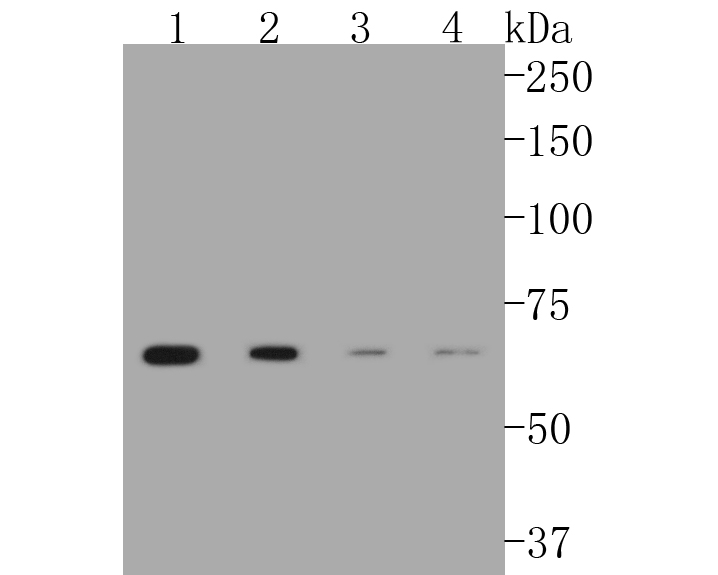
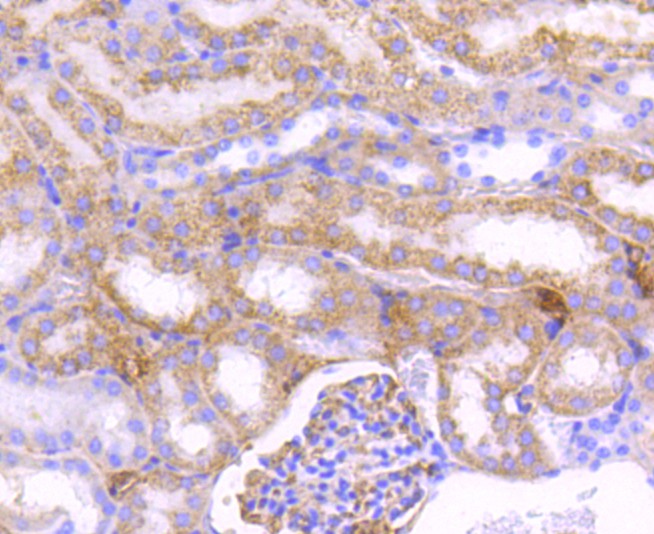
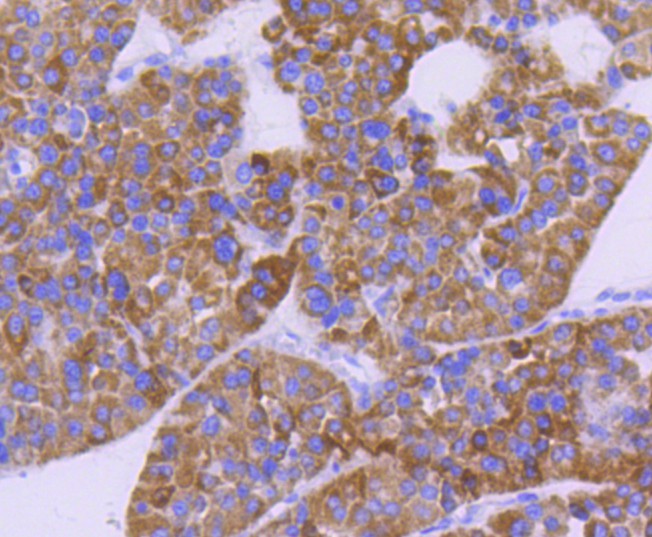
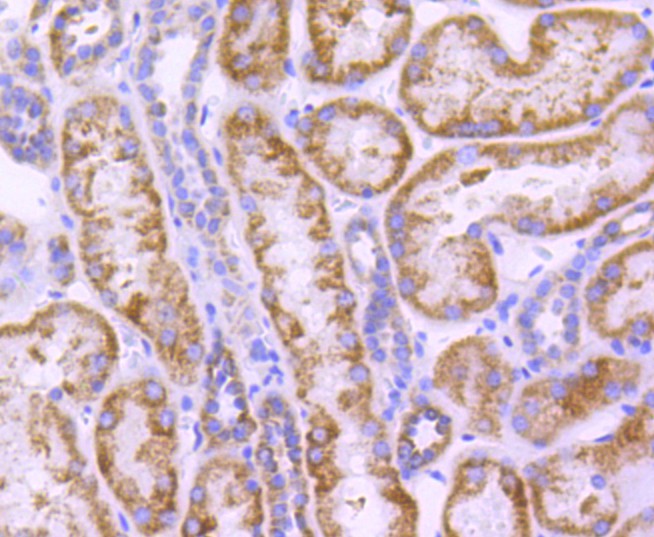
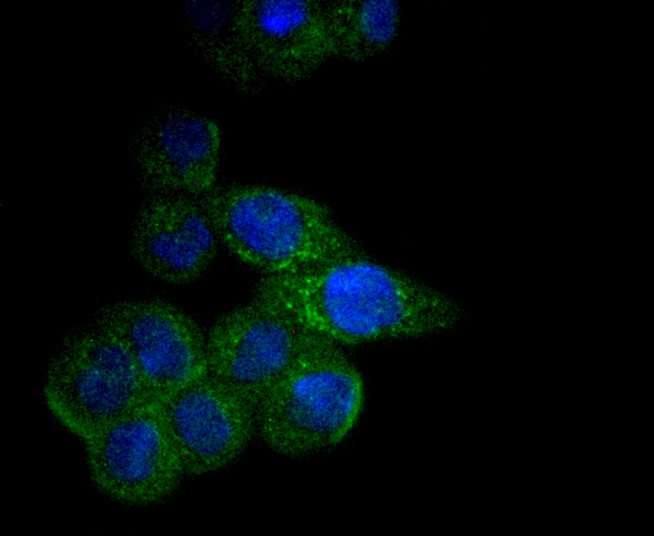
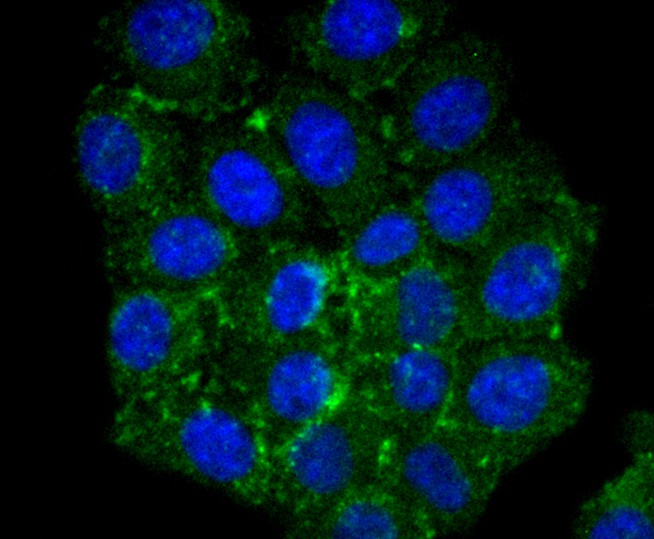


 +86 571 56623320
+86 571 56623320
 +86 18668110335
+86 18668110335

